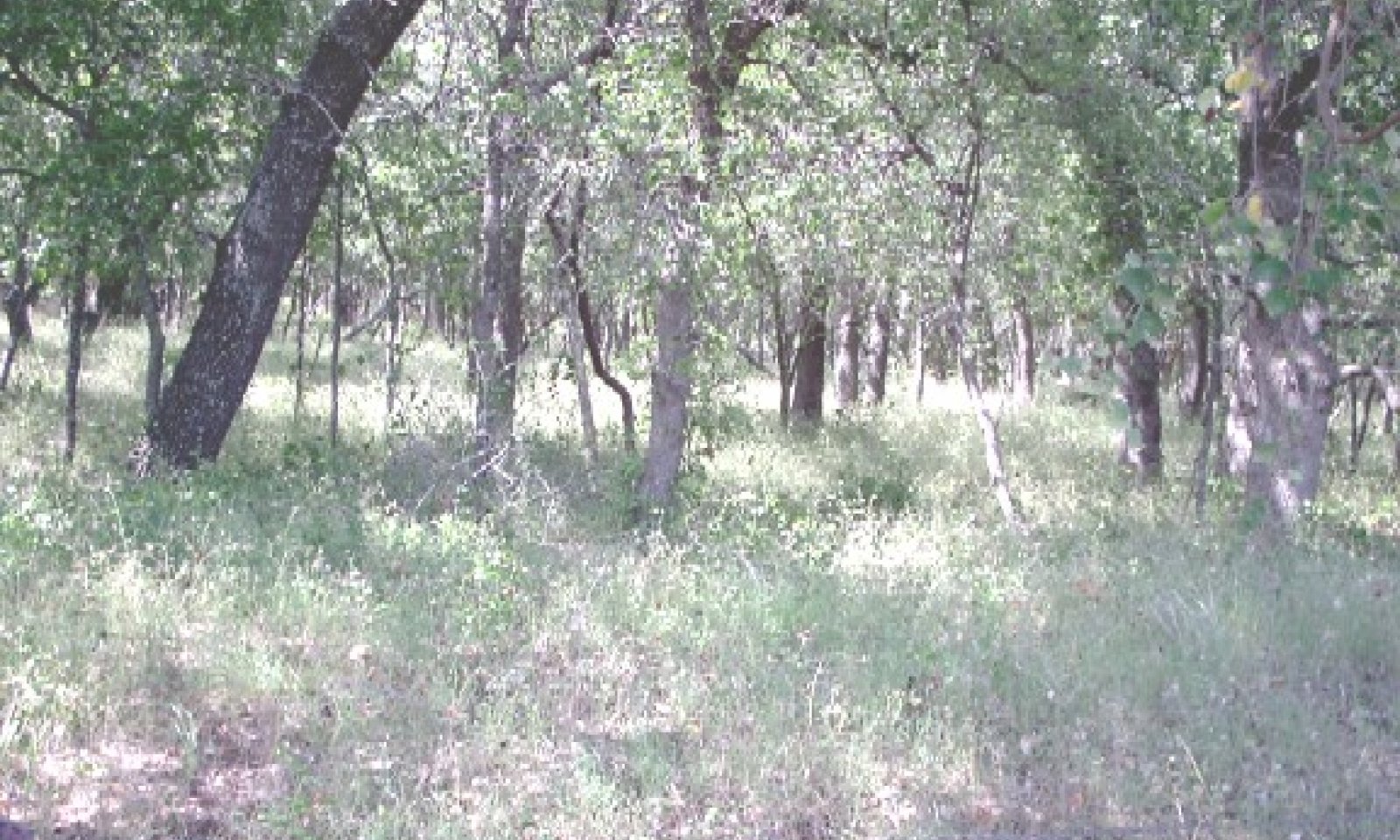
Deep Sand 29-33" PZ
Scenario model
Current ecosystem state
Select a state
Management practices/drivers
Select a transition or restoration pathway
- Transition T1A More details
- Restoration pathway R2A More details
- Transition T2A More details
-
No transition or restoration pathway between the selected states has been described
Target ecosystem state
Select a state
State 1
Tallgrass/Oak Savannah State - Reference



Description
The interpretive plant community for this site is the Tallgrass/Oak Savannah Community. The community is dominated by warm-season perennial grasses (tallgrasses) with blackjack oak and post oak. The major perennial grass species are well dispersed through the community. Perennial forbs and shrubs are well represented throughout the community. Annual production ranges from 1500 to 3000 pounds per acre and 55% of species composition is composed of grasses while 30% is composed of trees/shrubs.
The Tallgrass/Shrubland Transition Community consists of post oak, blackjack oak and elm starts regeneration and the tallgrasses will start to disappear from the plant community. Invader brush species appears and becomes established. Bumelia and hackberry starts to increase. Texas wintergrass and purpletop tridens increases as brush canopy increases. The plant community consists of about a 15 percent canopy of mature trees with an understory canopy of shrubs and young oaks, elm and pecan. Annual production ranges from 1500 to 3000 pounds per acre with 35% grasses and 45% trees/shrubs.
Submodel
State 2
Oak Shrubland State



Description
The Oak Shrubland Transition Community consists of 50 to 80% canopy of woody plants. As the shrubland community ages, oak matures and the invader species increase. Warm-season perennial tallgrasses such as Indiangrass and switchgrass have all but disappeared. In the early stages of this transition stage, little bluestem tends to dominate the grasses. However as brush canopy continues to increase, Texas wintergrass, three-awns and annuals continue to increase while the little bluestem decreases. Mesquite and/or juniper dominate the woody vegetation, but postoak and blackjack oak are beginning to occur. The grass species that dominate the site are splitbeard bluestem, silver bluestem, Texas wintergrass and threeawns along with the seeded introduced grass species. Annual production ranges from 1500 to 3000 pounds per acre with 20% of production composed of grasses and 55% production of trees and shrubs.
The Oak Woodland Community is a closed overstory (greater than 80% canopy) woodland dominated by blackjack oak and postoak. Other species present in small amounts are hackberry, bumelia and prickly ash. Understory shrubs and sub-shrubs include skunkbush sumac and flameleaf sumac. Woody vines are also present and include greenbriars, poisonoak, and grapes. The herbaceous understory is almost nonexistent. Shade-tolerant species such as purpletop tridens and Canada wildrye occur in small amounts. Small isolated clearings will contain little bluestem, perennial three-awns, Texas wintergrass and small amounts of other grasses. At the Due to the presence of shade the amount of grass cover is greatly reduced which in turn reduces forage production from the historic state. Annual production ranges from 1500 to 3000 pounds per acre with 5% grasses and 90% trees/shrubs.
Submodel
Description
Conversion of the midgrass prairie to cropland (mainly for cotton production) occurred from first settlement by European settlers during the middle 1800’s and continued until early 1900’s. Some remains in cropland today. The early cropping with little regard for erosion control leads to severe erosion by water. Erosion changes fertility, soil structure and moisture holding capacity of the soil. Refer to cropland capability classes for production potentials and limitations.
This site is often planted to introduced grasses following crop production or brush control. These grasses are planted mostly for livestock grazing and some hay production. Typical species planted include bermudagrass varieties and yellow bluestems. Many of these species are invasive and once established they are difficult to remove and hinders the establishment of native species.
Submodel
Mechanism
With heavy continuous grazing, no fires, and idled land, the Tallgrass/Oak Savannah State will transition into the Oak Shrubland State.
Mechanism
With the use of Prescribed Grazing, Brush Management, Range Planting, and Prescribed Burning, the Oak Shrubland State can be restored to the Tallgrass/Oak Savannah State.
Relevant conservation practices
| Practice | External resources |
|---|---|
|
Brush Management |
|
|
Prescribed Burning |
|
|
Prescribed Grazing |
|
|
Range Planting |
Model keys
Briefcase
Add ecological sites and Major Land Resource Areas to your briefcase by clicking on the briefcase (![]() ) icon wherever it occurs. Drag and drop items to reorder. Cookies are used to store briefcase items between browsing sessions. Because of this, the number of items that can be added to your briefcase is limited, and briefcase items added on one device and browser cannot be accessed from another device or browser. Users who do not wish to place cookies on their devices should not use the briefcase tool. Briefcase cookies serve no other purpose than described here and are deleted whenever browsing history is cleared.
) icon wherever it occurs. Drag and drop items to reorder. Cookies are used to store briefcase items between browsing sessions. Because of this, the number of items that can be added to your briefcase is limited, and briefcase items added on one device and browser cannot be accessed from another device or browser. Users who do not wish to place cookies on their devices should not use the briefcase tool. Briefcase cookies serve no other purpose than described here and are deleted whenever browsing history is cleared.
Ecological sites
Major Land Resource Areas
The Ecosystem Dynamics Interpretive Tool is an information system framework developed by the USDA-ARS Jornada Experimental Range, USDA Natural Resources Conservation Service, and New Mexico State University.



